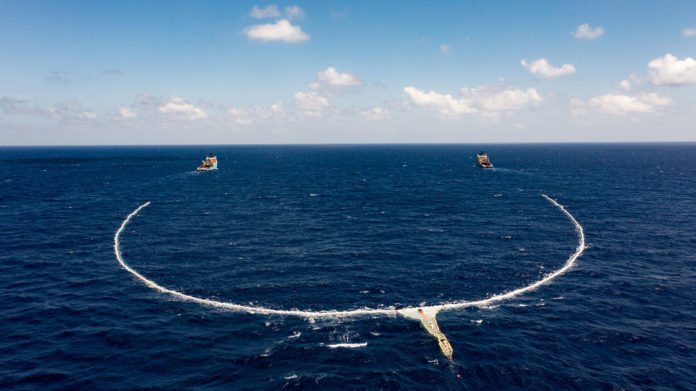The Ocean Cleanup Project, established in 2013, aims to extract as much plastic waste as possible from ocean water. The team has been working for years on trash-catching barriers capable of collecting plastic debris from the surface of the ocean.
The initiative has most recently deployed its first large-scale system designed to clean up ocean plastics to the Great Pacific Garbage Patch. The 800-meter-long system, known as System002 or “Jenny,” left Victoria, British Columbia, last Month onboard a Maersk offshore supply vessel. The goal of the new design, with the team switching from a passive design that relied on the forces of the ocean to one powered by active propulsion, is to catch plastic more efficiently and effectively than previous builds.
Compared to the earlier systems, “Jenny” is larger and includes new technologies. The team has even added a parachute designed to slow down the barrier and maintain a constant speed. The crewed vessels at either point of the U-shaped barrier use active propulsion to tow it through the water at a steady speed of 1.5 knots. The collected plastic is funneled into a retention zone at the far end, and one benefit of having it towed by crewed vessels is that it can be steered towards areas of high waste concentration.
Jenny was deployed for the first time in the Great Pacific Garbage Patch this week and will be subjected to more than 70 tests over the next 60 weeks. The tests are intended not only to demonstrate the effective operation of the structure but also to demonstrate that the device does not have any adverse effect on the environment.
Over the past several years, the company has been developing a large-scale system that essentially concentrates floating plastic into one that is then easier to remove. The company then uses plastic to create products that help raise funds for its efforts. Jenny is a significant step toward the Ocean Cleanup Project’s goal of removing 90 percent of ocean plastic by 2040.
